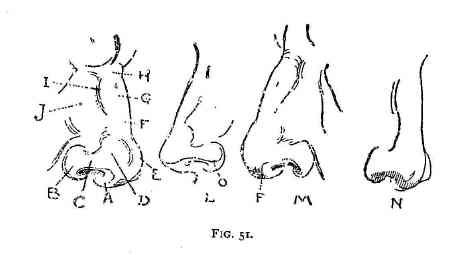The first thing to do when you receive your cup of hot cocoa, is to inhale deeply. Does the rich aroma of chocolate waft gently into your nose? If there is hardly any smell, or you have to sniff so loudly that you disturb the people sitting nearby, then your hot chocolate will most probably be sub-standard.
Next, check the level of the foam using the teaspoon provided to skim the surface of the foam, and sample it thoughtfully. Foam should be white and bubbly, with suttle undertones of the chocolate peeking out at you around the edges. In the most places, you will often find cocoa, nutmeg, or cinnamon powder sprinkled lightly on top of the foam. Alternatively, you might find a swirl of melted chocolate drizzled on top. This may or may not be good, depending on the quality of your melted chocolate - chocolate syrup is worse than any topping at all. Depending on the size of you cup, the amount of foam vary. A small cup should have at least 1 cm foam. Bigger cups should have at least 2 - 3 cm foam. It would be ideal if the foam goes over the rim of the cup by about 3 mm.
Sometimes foam is substituted for cream. Once again, this can be a blessing or a curse. If the cream is of a high quality, it will complement the chocolate nicely, otherwise, it may be better to do without.
Once you have finished savouring the foam, you will generally be able to tell what temperature the hot chocolate is. The very best hot chocolates will be piping hot by the time you have finished the foam. The true colour of the chocolate will also be revealed to you. It should always be uniquely the colour of hot chocolate. It should never be the colour of tea or coffee, in which case, it is either too weak or rich, respectively. Deep brown is best.
An important thing to note, however, is that many sub-standard establishments do not properly mix the cocoa powder, so you end up having a lot of very bitter, rich chocolate at the end, while the rest of your chocolate tastes rather bland. To test for this, stir the chocolate. If the colour deepens, then it is likely the case. While this does not mean the chocolate will be bad, true chocolate gourmets do not hold with this nonsense. Especially since you will have to keep stirring throughout the drink, losing precious heat.
The first sip of your drink should always be that - a sip. Nothing more, nothing less. If you have to use your teaspoon to drink it, it is too hot. Make sure that your sip is relatively soundless. If you have to sip loudly, that probably means that the drink is too hot.
Once you have had the first sip, you should roughly be able to tell whether it is worth downing the rest.
That said, my budding chocolate gourmet, appreciating hot chocolate depends on your tastbuds. However, there are some things we all agree on. The chocolate should taste authentically like real chocolate. If you are a fan of dark chocolate, it should have a slight tinge of bitterness. Most hot chocolates are much too sweet. However, beware the bitter hot chocolate!
Lastly, don't judge a hot chocolate by it's appearance. While this has yet to have failed for me, some people claim to have found one or two hot chocolates which have deceiving appearances, and while lacking in foam, and looking distinctly tea-like, purportedly taste like heaven.
That said, my budding chocolate gourmet, appreciating hot chocolate depends on your tastbuds. However, there are some things we all agree on. The chocolate should taste authentically like real chocolate. If you are a fan of dark chocolate, it should have a slight tinge of bitterness. Most hot chocolates are much too sweet. However, beware the bitter hot chocolate!
Lastly, don't judge a hot chocolate by it's appearance. While this has yet to have failed for me, some people claim to have found one or two hot chocolates which have deceiving appearances, and while lacking in foam, and looking distinctly tea-like, purportedly taste like heaven.
